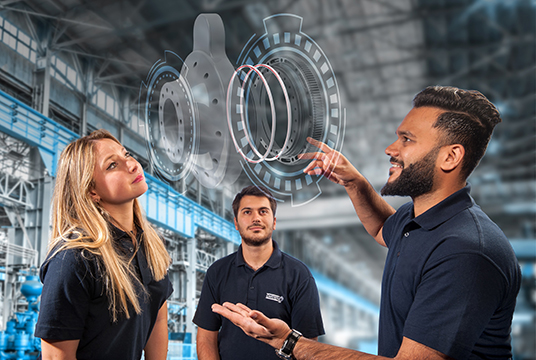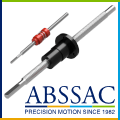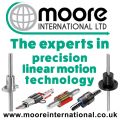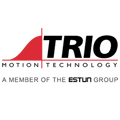
Posted to News on 10th Feb 2022, 16:00
When to use a thin section bearing to boost performance

It would be difficult to imagine how the modern industrial age would have developed without bearings. very kind of machine that requires motion makes use of bearings in some way to smooth their path and reduce friction and such an important piece of technology has a long and well documented history stretching back to the stone-age.
A huge leap forward in the development of bearings was helped by improved metal forming processes at the start of the industrial age which is when Philip Vaughan received a patent for a ball bearing made of steel in 1794, the design of which became the basic blueprint for today’s ball bearing.
Fast forward to now and the ubiquitous ball bearing and bearing assemblies continue to be vital motion control components within a huge range of industrial and manufacturing machines. Today, the rapidly increasing demands of robotics and advanced automation has seen the development of more compact, lightweight thin section bearings and these high precision components have become essential across many industries. For example, aerospace, defence, satellite systems, optical lenses, semi-conductor manufacturing to camera gimbals.
Oxfordshire based precision bearings specialist Carter Manufacturing the European distributor for Silverthin precision thin section bearings and offers many years of experience in the application and use of thin section bearings.
Thin section bearings are typically used where applications have critical space and weight restrictions yet still have loading and torque requirements which demand a bearing solution but without the space and weight requirements of standard deep groove ball bearings. There are various definitions used in the industry to highlight the difference between ‘standard’ section bearings versus thin section with the most common being when the bore diameter is more than four times greater than the radial cross section.
Whilst cross-sectional size can vary, it is typically twice the ball diameter. Of course one design won’t suit all applications which is why these types of bearings are generally available in a variety of configurations. These are; radial, angular contact, 4-point contact, full complement, duplex pairs and different cross sections.
Selecting which type of thin section bearing configuration is usually driven by the type and magnitude of loading required in the application. In environments with axial loads present in one direction, Silverthin recommends its A-Type angular contact ball bearing which also works well in radial or combined thrust applications. However, this option on its own is not best suited to applications which require the support of moment loads, or reversing axial loading.
Contact bearings, such as Silverthin Type-C bearings are the best choice for these situations as their deep ball grooves have the ability to withstand higher loads. Although this type of bearing is used primarily in applications with radial loads, it can also withstand moderate axial loads, reversing axial loads and also moment loads which Carter is best placed to advise on.
Where significant moment loads prevail Carter would specify the Silverthin Type-X point, or 4-point contact ball bearing option. This is designed with ‘gothic arch’ raceways to create four contact points between the balls and the raceways and is recognised to be excellent for moment loading and also for reversing axial loading. Whilst the X-Type bearing can also be used for other light loading conditions, it is not recommended to replace the C- or A-Type bearing for pure radial loads.
As a general rule, Silverthin advises that when specifying the X-Type of bearing for axial or moment loads combined with radial loads, the application speed (RPM) needs to be carefully considered. Carter’s engineering department has extensive data available and can supply information on combined load, limiting speeds as well as advising on radial bearing use with combined radial loads, with axial or moment loading and for limiting speeds and separator selection.
When the main application specifics, such as space, load and other operating conditions are determined, it’s then time to consider the type of thin section bearing to use. Thin section bearings are often used where wiring or tubing passes through the bore in a hollow shaft, such as a slip ring, or in wire forming machinery.
They are also used in mechanisms such as gimbal platforms within optical and targeting systems on ships, aircraft and also in radar and satellite communications equipment on land, sea and air-based.
There are other applications for thin section bearings, too. They are ideal for achieving smooth action in articulating parts such as in the elbows of robotic arms, or other articulating joints and can also be used in all types of work holding devices such as turntables, indexing and rotary tables.
Carter can provide application advice on all aspects of their Silverthin thin section bearings so are well placed to deal with design challenges where space is at a premium and repeatability, combined with absolute accuracy and longevity is vital over prolonged periods of time.
Unit 7 Isis Court, Wyndyke Furlong
Abingdon Business Park
OX14 1DZ
UNITED KINGDOM
+44 (0)1865 821720
















